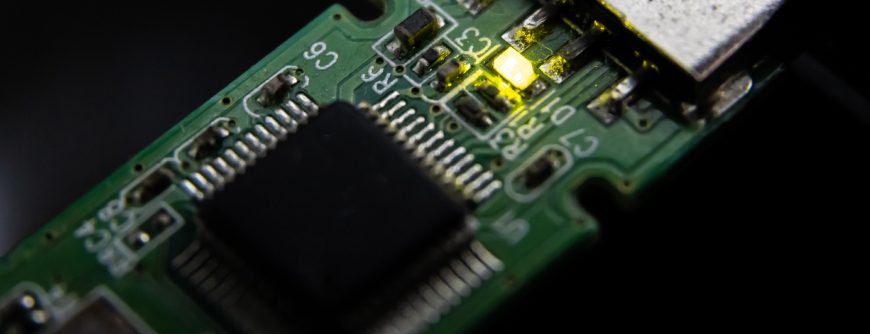什麼是 2D NAND SSD?
2D NAND 也稱為平面 NAND是一種快閃記憶體,其中快閃記憶體單元並排放置在電晶體晶粒上。2D NAND 於 1987 年首次上市,與硬碟(HDD)相比,早期固態硬碟(SSD)的效能、讀取/寫入速度和機械穩健性都更好,但每容量需付出高昂的成本。從根本上來說,容量受到單一平面並排安裝的單元數量所限制,這促使了 3D NAND 的發展。在本文章中,我們將探討 2D NAND 是什麼、如何運作,以及其可靠性。
2D NAND 如何運作?
2D NAND 的運作原理是將記憶體位元儲存為電路中的電壓狀態。要了解 2D NAND 的運作方式,首先要介紹幾個關於 NAND 單元的概念,這一點很重要。
2D NAND 中的 NAND 代表什麼意思?
NAND 代表 “NOT AND”,它描述了 NAND 單元內部電路中使用的邏輯閘極或布林運算子。NAND 閘極只有在兩個輸入都為 TRUE 時,才會產生假值。
什麼是 NAND 單元?
NAND 單元是一種電晶體,由頂部的控制閘和夾在兩個隔離層之間的浮動閘組成,具有通道連結源,並在下面排放。
在整個控制閘中施加電壓可吸引通道中的電子通過第一個隔離層進入通道,並進入浮動閘。當浮動閘處於此充電狀態時,資料將被有效儲存,且儲存格的二進位值被設定為零。而且因為浮動閘是電力隔離的,即使電源中斷,它也會儲存記憶體,使記憶體單元不揮發。
在源極和汲極之間施加足夠高的電壓,會在控制閘極處產生負電壓。如此可將浮動閘電子排回通道,有效清除記憶單元。儲存格的二進位值設定為 1。
您可以在 2D NAND 中儲存多少位元?
2D NAND 無法儲存每個單元超過一個位元,這是常見的誤解。2D NAND 的平面性質並不代表您不能使用 MLC、TLC 和 QLC 單元。這只是表示您無法堆疊這些單元。
以下是 NAND 單元加班的演變概述:
- 單層單元 (SLC) 快閃:每個單元中儲存一個位元資料,共有 2 種電壓狀態
- 多層單元 (MLC) 快閃:每個單元中儲存兩個位元資料,共有 4 種電壓狀態
- 三層單元 (TLC) 快閃:每個單元中儲存三個位元資料,共有 8 種電壓狀態
- 四層單元 (QLC) 快閃:每個單元中儲存四個位元資料,共有 16 種電壓狀態
如你所見,每個單元儲存的電壓狀態越多,儲存的資訊位元就越多。在您嘗試儲存更多電壓狀態時,可靠性和容量有一般性的取捨。
2D NAND 與 3D NAND 相比,可靠性如何?
2D NAND 和 3D NAND 之間的差異在於 2D NAND 是平面的,而 3D NAND 則採用垂直堆疊。2D NAND 的主要限制因素,是您可以安裝在晶片上單一平面的單元數量。電池芯越小,您越能適應單一電晶體平面。另一方面,較小的電池尺寸可增加電子洩漏的可能性,從而降低可靠性。
工程師建立 3D NAND,透過垂直堆疊單元來改善 NAND 晶片的容量。由於您在縮減儲存單元時失去可靠性,垂直堆疊也讓您擁有空間,使用更大的儲存單元來提高可靠性。最後,NAND 晶片的容量和可靠性都會大幅增加。
哪些 SSD 使用 2D NAND 快閃記憶體?
市場上的大多數 SSD 目前都使用 NAND 快閃記憶體。因為 2D NAND 是一項老舊技術,目前已經淘汰,所以廠商不再宣傳其產品用途。較舊的 SATA SSD 使用 SLC 晶片,不宣傳為 3D NAND,很可能使用較便宜的 2D NAND 快閃記憶體。儘管如此,這項技術仍舊有其利基用途。傳統部署可能仍需要較舊的 2D NAND 快閃記憶體,而不需要大量記憶體的微裝置,則可能選擇單一電晶體平面上 SLC 單元的效能和可靠性。
結論
在本文章中,我們探討了 2D NAND 是什麼,以及它與 3D NAND 有何不同。雖然 2D NAND 是較舊的技術,但它仍舊用於傳統硬體中,作為較便宜的快閃記憶體版本,並用於利基使用案例。


